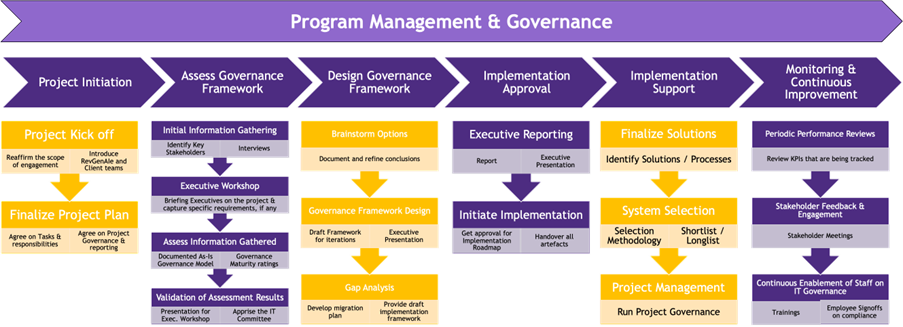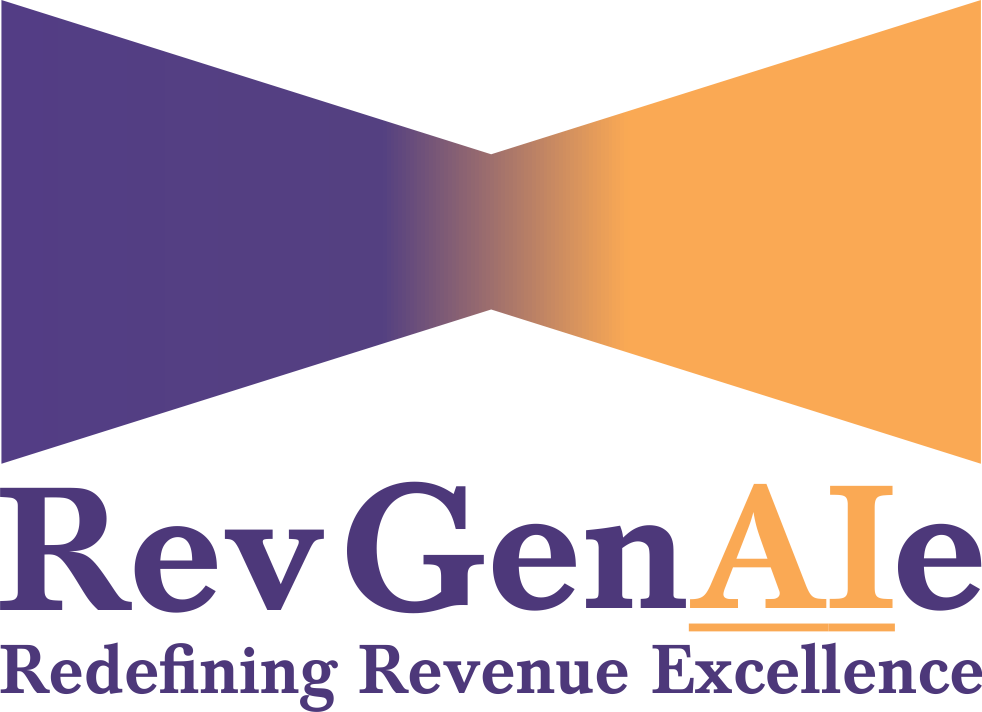- Home /
- IT Governance framework consulting
IT Governance framework consulting
An IT governance framework is designed to ensure that an organization's IT investments align with business goals, maximize value, and effectively manage risks. It includes policies, processes, roles, responsibilities, and performance metrics to guide the management and utilization of IT resources.
Today, organizations face a number of compliance and regulatory challenges surrounding the protection of confidential data, financial information, data retention, and disaster recovery. With an effective IT governance and management framework, organizations can establish clear lines of responsibility, define standard policies and procedures, and establish mechanisms to monitor and control IT activity.
IT governance frameworks typically include four key components:
- Policies
- Procedures
- Controls
- Metrics and Key Performance Indicators (KPIs)
At its core, an IT governance framework includes one or multiple processes that empower an organization to manage risk, improve security, and operate at its most efficient. Because an IT governance framework is a flexible methodology, it is best customized to meet the unique needs of a specific industry.
Key Components of an IT Governance Framework
Strategic Alignment
- Ensures that IT strategy aligns with the business strategy.
- Involves collaboration between IT and business leaders to define and prioritize IT initiatives that support organizational objectives.
Value Delivery
- Focuses on maximizing the value derived from IT investments.
- Ensures that IT projects deliver benefits on time and within budget.
- Includes mechanisms for measuring and managing the benefits realization process.
Risk Management
- Identifies and manages IT-related risks.
- Implements controls and procedures to mitigate risks and ensure compliance with regulatory requirements.
- Includes cybersecurity, data privacy, and disaster recovery planning.
Resource Management
- Ensures optimal utilization of IT resources, including people, processes, and technology.
- Involves capacity planning, workforce management, and IT asset management.
- Balances demand and supply of IT resources to meet organizational needs.
Performance Measurement
- Establishes metrics and key performance indicators (KPIs) to assess IT performance.
- Includes regular monitoring and reporting of IT project progress, service delivery, and operational efficiency.
- Utilizes frameworks like Balanced Scorecard and ITIL for performance management.
Popular IT Governance Frameworks
COBIT (Control Objectives for Information and Related Technologies)
- Provides a comprehensive framework for IT governance and management.
- Includes best practices, tools, and guidelines for aligning IT with business goals and managing IT-related risks.
- Provides 37 different IT processes—and each process is defined by inputs and outputs, objectives, performance measures, and other metrics.
ITIL (Information Technology Infrastructure Library)
- Focuses on IT service management (ITSM) best practices.
- Provides a systematic approach to managing IT services, ensuring they align with business needs and deliver value.
- Includes five key protocols—from strategy and design to change management and operation improvement.
ISO/IEC 38500
- Provides principles and guidelines for effective IT governance.
- Emphasizes accountability, performance, legal, ethical considerations and conformance in IT governance practices.
TOGAF (The Open Group Architecture Framework)
- Offers an enterprise architecture framework that includes IT governance components.
- Helps organizations design, plan, implement, and govern enterprise information architectures.
Complete Benefits of Implementing an IT Governance Framework
- Improved Decision Making: Provides a structured approach to IT decision-making, ensuring alignment with business priorities.
- Enhanced Accountability: Clarifies roles and responsibilities, fostering a culture of accountability within IT and across the organization.
- Risk Mitigation: Identifies potential IT risks and implements controls to mitigate them, enhancing organizational resilience.
- Optimized Resource Utilization: Ensures efficient use of IT resources, reducing waste and maximizing return on investment (ROI).
- Regulatory Compliance: Helps organizations comply with relevant laws, regulations, and standards, avoiding legal and financial penalties.
RevGenAIe’s Practices for Implementing an IT Governance Framework
- Define Business Goals and Objectives: We clearly outline the organization's priorities, desired outcomes, and success measures before implementing the framework.
- Involve Key Stakeholders: We engage key stakeholders in both development and implementation to ensure the framework captures all requirements and gains necessary buy-in.
- Customize Solutions: We recognize that one size does not fit all; approach implementation with flexibility to meet unique client needs.
- Set Key Performance Indicators (KPIs): We jointly establish KPIs to measure and monitor the framework's performance. Align KPIs with business goals and regularly review them to identify improvement opportunities and demonstrate value.
- Review and Update: We regularly review and update the framework to keep pace with technological advances, business changes, and industry standards. Aim for annual reviews to ensure ongoing alignment
RevGenAIe’s Approach for Implementing an IT Governance Framework
Our approach comprises 6 phases as given below bolstered by Program management and governance throughout the engagement.
An effective IT governance framework is essential for aligning IT initiatives with business goals, managing risks, and ensuring that IT investments deliver value. By implementing a robust governance framework, organizations can enhance their IT capabilities, drive innovation, and achieve sustainable growth.


We are a group of accomplished executives with over 75 years of collective experience in managing Sales/Revenue operations, Presales, Solutioning, Sales Enablement, and Finance operations within prominent SaaS products, Life Sciences, and IT services organizations.
Useful Links
Services
Our Contacts
26, Navarathan Gardens,
Karnataka, Bengaluru – 560062